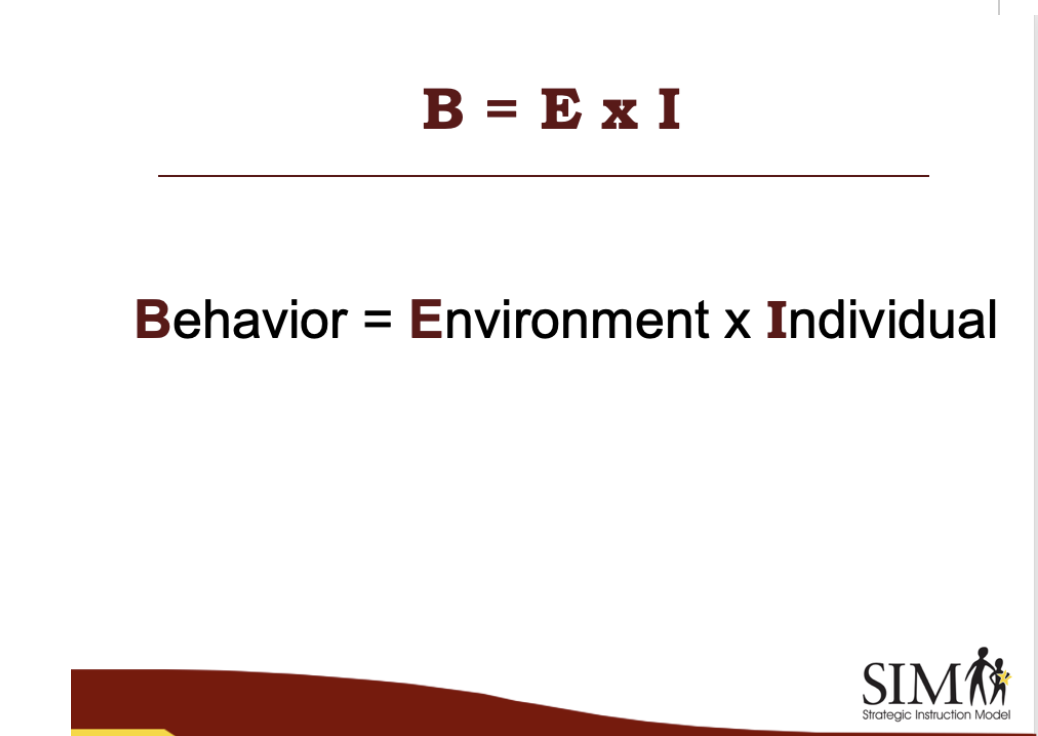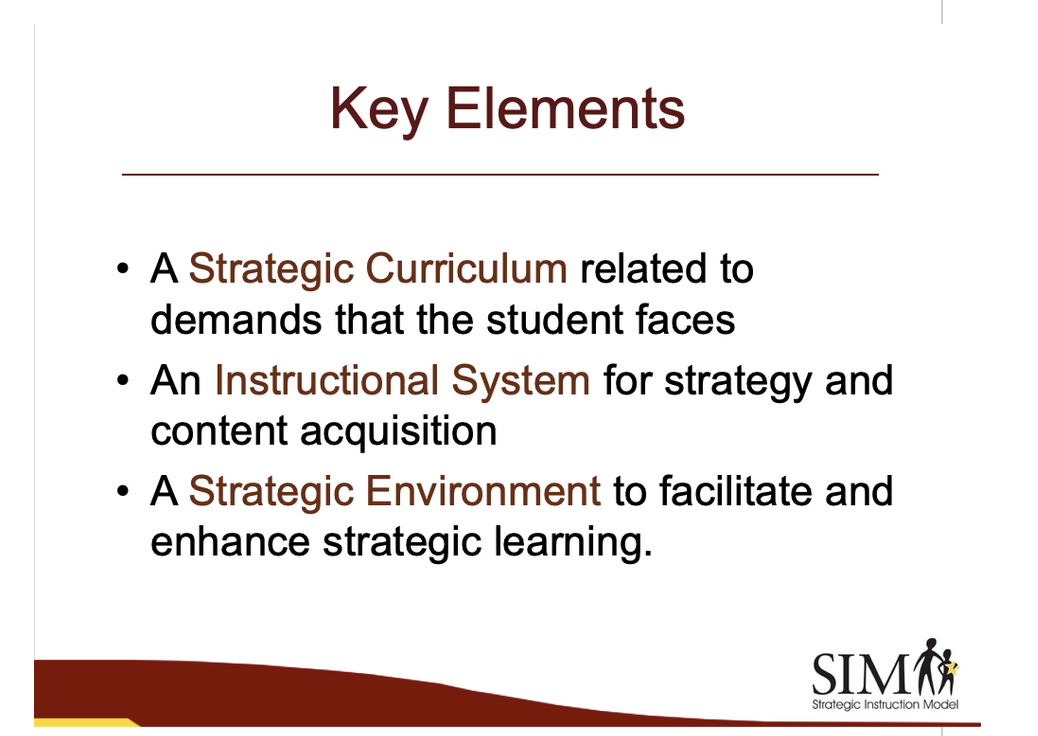PD Notebook: Planning for A Strategic Enviroment
Note: This notebook series was created in the 1998 and was given as a part of PPDIs for many years. Parts have been updated, parts have not.
The purpose of this guidebook is to provide you with information you may find useful as you teach others about how to think about and plan for the development of a SIM instructional program . The information included focuses on assisting you help teachers understand the goals and principles of SIM. Understanding of these principles should be manifested in an individual's ability to begin planning for the development of an instructional environment that prompts and promotes strategic learning and performance as a major overriding goal. Therefor, the first step in preparing teachers to implement SIM is to focus on helping teachers to understand how the entire instructional environment can be arrange or altered to be consistent with the goals and principles of strategic instruction. Failure to do this may lead teachers to teach strategies in isolation or promote the idea that strategic instruction is accomplished simply through the implementation of a set of procedures outlined in instructional manuals. Therefore, the PD process does not start with and explanation of the procedures for implementing specific curricula, it begins with teaching individuals how to ensure that a strategic environment is created for learning that supports, expands, and reinforces strategic learning and performance. In addition, this focus must be maintained throughout the process and must be the target for specific sessions, follow-up and discussion.
While all the information needed to plan for the development of a strategic environment may not be included in this guide, the sections have been organized to help you address many of the components that are critical for you to promote the understanding and development process. You should expand on these sections as your experience teaches you about how this process unfolds across different settings and conditions/ the diversity across instructional settings is great and each PDer must rely on his/her own judgment to remove or embellish this information.
While this guide provides a great deal of information related to promoting and understanding strategic instruction and creating a strategic environment, it also places a great responsibility on you for ensuring effective and efficient implementation of the essential elements associated with successful strategic instruction.
- Section 1: The Instructional Approach
-
The first section of this guide, The Instructional Approach, provides you with the information and resources you will need to present general information about strategy instruction. The focus of this section is on helping others to understand the basic principles and concepts related to strategies instruction as a general approach to educational intervention. It includes Guidelines for Presenting an overview of SIM, references, and presentation ideas.
Article: The Strategies Instructional Approach, Donald D. Deshler, B. Keith Lenz,
Presentation: The Strategic Instruction Model
Presentation: The Strategic Instruction Model notes pages
Special thanks to Joyce Rademacher, Muriel Hays, Peggy Showalter, and Eleanor Womack-Nelson.
- Section 2 and 3: Resources and Implementation Plan
-
Explanatory Presentations
Articles
- Section 4: Component Integration
-
This section Includes a resource related to the integration of SIM components. The background Information and the procedure described here are parts of a larger document which will be designed to assist teachers in developing their own strategies. The document is still in preparation; however, portions of the draft manuscript are included here.
The first portion of the manuscript Included here is entitled •what's So Strategic about Strategies?• The elements which make strategies effective and efficient are examined, and both visual and textual material Is Included. After thorough study of this material, the visuals might be used in presentations to enhance teacher s' or teacher trainees' understanding of the strategic elements which make strategies work.
The second portion of the manuscript, entitled •what's So Strategic about Strategies Instruction• is very short. An article in the Resource Articles subsection of th is Component Integration section provides information which should be included here.
The third portion of the manuscript outlines the procedure for developing strategy interventions; the procedure Is called TACTIC: The steps of the process are included as are worksheets to be used in the development process. Blank copies of these worksheets are Included as are completed, or partially completed, worksheets and stimulus materials which might be used to demonstrate and practice the steps of TACTIC. Near the end of this material Is a •Strategy Evaluation Checklist• which may be used to evaluate whether critical features related to strategy usefulness and content have been included In the newly-developed strategy.
The last step in the TACTIC procedure is •construct Instructional plan•. Blank forms for each stage of the Instructional process are Included so that the developer can create an •instructor's manual•for the strategy.
The Information Included here is based on the book TACTIC: Developing a Strategy Intervention by Edwin s. Ellis, B. Keith Lenz, and Frances L. Clark which will be published by Edge Enterprises, Inc. Some of the Information Is presented in an unedited form and is excerpted from a draft manuscript. Therefore, this Information Is for personal and privileged use In preparing presentations related to strategy Interventions and Is not for duplication, dissemination, or citation.TACTIC: How to Develop a Strategy Intervention
Component Integration Resource Articles






